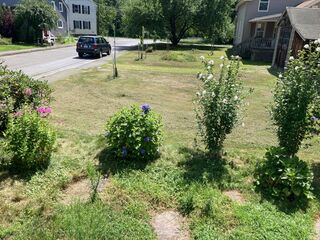Fear
COVID, Three Summers In: It's Worse and Better
When the world feels dark, a smile can change the day.
Posted September 21, 2022 Reviewed by Ekua Hagan

July 2022: His sweaty face lit up as we passed one another, keeping our distance—I on the narrow sidewalk, the 30ish-year-old man in the street. Neither of us wore masks.
“Good morning!” he said with a smile as he spoke. “I hope you have a great day!”
“Thank you!” I said, delighted by his good cheer. “I hope you have one, too!”
The day was warm and heading hotter. I was on my way home from the deli-fruit market with three loaves of pumpernickel bread, a bag of baby arugula, and a wedge of cambozola cheese. I’d grabbed the cheese on impulse after I saw that it was priced at $3 a pound more than I paid just a month earlier. Although we hadn’t finished eating the first one, I thought I was clever to purchase it now, assuming the cost would only go up.
Walking home, I’d been wondering about local reactions to the COVID pandemic still evident in this part of western Massachusetts. I was comparing that with what I’d read about the whole state and then the whole country, especially as measured by observable behaviors such as wearing masks and keeping distance, indoors and out.
Will and I both dread catching any version of COVID-19. It's not so much the threat of getting sick itself—although that scares us—but it is the fear of long COVID that moves us to avoid restaurants and movies and prompts us to wear masks indoors no matter where we go. It’s hard enough to worry that we’re losing mental acuity as we age; the idea of risking those limitations even sooner is horrifying. Like inviting the boogeyman to hang out and chat with you in bed!
Our only regular indoor activity is chorus rehearsal. Most Tuesday evenings, we spend over two hours in a large room among more than 50 singers, all breathing heavily with open mouths. That sounds foolhardy, but vaccinations and boosters, wearing masks at all times, and sober individual responsibility are expected and generally honored. None of us want to risk losing these precious moments of connection. Singing in the midst of other singers nourishes the soul.
The deli-fruit store is small, and few customers were shopping when I was there. Some were wearing masks and some weren’t. A few staff wore masks, others didn’t. The cashier who checked me out wasn’t wearing one. The man behind the cheese counter was. There was no longer a mask requirement posted on the door, unlike the case at certain other stores in town. Our dentist's and doctor’s offices definitely require them. I’ve noticed that as the weeks go by, I’m one of the fewer and fewer patrons who are masked, but I don’t mind. I’m glad that I can be in a store that doesn’t require them, yet feel reasonably secure that no one will make me feel bad for wearing mine.
Be true to yourself, I remind myself. Live and let live.
I think back to the early days of March and April 2020—they feel so far away now I’m not sure my memories are accurate. I do remember the first awkward months of trying to figure out mask etiquette as I passed others out walking on the street or sidewalk, or walking on the path on the dike that runs along the edge of my neighborhood. There was uncertainty about masks: who needed to wear them, how to wear them, what kind to wear. Fear dominated our days then. Death hovered in the air. We could die. People we loved could die. Thousands did die, then tens of thousands, then more. Every day. Isolated. Dying alone. There were only a few gatherings online, if at all. Zoom friends in little boxes. Family occasions masked, socially distanced, gestural hugs at best—we’d face one another six feet apart, arms outstretched. I remember washing groceries. Quarantining mail.
There was a year or two of creativity with mask-fabric fashions—patterns and colors coordinated with outfits, super-cute ones for kids. When vaccines became available, I hoped the end was in sight and that masks would no longer matter. Instead, with time, fashion statements became political statements. Now, perhaps since the last Omicron surge, it’s pretty much n95 or kn95 and no nonsense.
When I look around my small corner of the world, I’m grateful to be alive. I’m glad I’ve been able to keep up to date with vaccinations and boosters. We’re back at Beginner Tai Chi in person at the senior center. Will and I wear masks. A few others do, too. Some go without. But the class is small, and all of us are careful. That’s what gives me comfort—looking out for strangers. Like it or not, we’re all in this together.
We’re emerging from a terrible storm, but it hasn’t cleared out yet and may never clear completely. It seems to have joined and intensified other worsening weather systems, political especially, threatening basic structures we used to take for granted, while the droughts, fires, and floods, unbearable heat and new deadly diseases continue to spread.
My initial sanguine view seems naive and innocent today. But my gratitude at being greeted by a stranger walking down the street is no less valid for my broader, more realistic perspective. Every interaction has its own integrity, its own immediate energy, and its Light. If we are in a new era of deepening darkness and increasing danger, this light has only more urgency, more value.
Cherish the Light. Every bright moment. Every time.
“Good morning! I hope you have a great day!”




